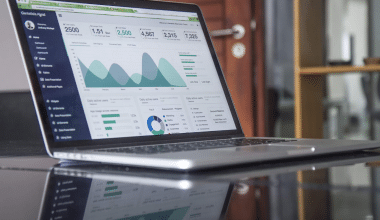Consider that you need a new textbook for your upcoming course. Do you purchase it locally or online from a vendor who may be located anywhere in the world? Imagine if the identical new book is $50 in a nearby store but is also available from a seller in another country with free shipping! Only twenty-five of that country’s money are being offered by the seller. Since twenty-five is just half of fifty, the mail-order book must be less expensive. Not! Depending totally on the exchange rate between the two currencies, we can determine whether or not this is a wise move. You’ll be happy you read this explanation and learned all about Purchasing Power Parity by country and its calculation the next time you’re thinking about purchasing another currency!
What is Purchasing Power Parity?
An economic theory known as purchase power parity (PPP) enables comparisons between the purchasing power of different global currencies. It is the hypothetical exchange rate at which you could use a different currency to purchase the same amount of products and services.
You can find out how much something would cost if all countries had the same currency by performing a purchasing power parity calculation. In other words, it is the rate of exchange necessary to convert one currency into one with the same purchasing power as another. The concept of purchasing power parity is founded on the idea that over time, pricing for goods and services should become comparable across nations.
Computed parity is time-consuming. Everything must be valued in U.S. dollars. That includes products that aren’t typically offered in America. For instance, ox carts are not common in the United States. Furthermore, it seems unlikely that the cart’s U.S. price would adequately convey its value in rural Vietnam, where it is necessary for rice cultivation.
Every country’s PPP is calculated by the World Bank. It offers a map that compares the PPP ratio to that of the US.
The PPP is calculated for many developing nations using a multiple of the official exchange rate (OER) metric. OER and PPP measurements for developed nations are more comparable because their living levels are more comparable to those of the US.
How Does Purchase Power Parity Work?
When comparing the economic production of several countries, an economist will utilize the PPP. The country with the largest economy in the world might be ascertained with this information. To paint a more complete picture of a country’s economic health, PPP exchange rates could be used in addition to GDP figures.
Since it helps forecast currency changes and flags weakness, the theoretical value is especially beneficial to investors who hold foreign equities or bonds and currency traders.
Purchasing Power Parity By Country
Gross Domestic Product (GDP), Gross National Income (GNI), GDP per capita, and GNI per capita can all be compared from one country to another using the purchasing power parity (PPP) conversion rate. The most well-known example of Purchasing Power Parity is the McDonald’s Big Mac. It then calculates the amount by which the money in one country would need to be multiplied to buy the same goods and services in another country (typically the US). The country’s PPP conversion factor or exchange rate is represented by this number.
For instance, if a Big Mac costs 12.00 in a country’s local currency (pesos, rubles, etc.) and $5 in the US, that country’s PPP conversion rate is 12/5 or 2.4. This indicates that a single unit of that country’s currency would need to be multiplied by 2.4 to equal one US dollar. The US dollar is worth 2.4 times as much in that country’s currency as another method to put this rate into perspective.
The purpose of the Purchasing Power Parity exchange rate is to convert each country’s local currency into a common baseline currency—usually the US dollar or the International dollar, a fictional currency specifically designed for such a purpose. Thus, economic performance can be compared using a single common currency rather than utilizing dozens of different national currencies, whose market exchange values can fluctuate quickly.
A greater PPP, like Pakistan’s (41.95), represents less purchasing power than does a lower PPP, like Luxembourg’s (0.85) because the PPP conversion factor has an inverse value. As a result, a PPP with a lower numerical value is typically preferred. However, PPP is rarely taken into account on its own and by itself provides little insight into a country’s economic health.
Top 10 Countries with the Lowest PPP Conversion Factor (Highest Purchasing Power) (INT$):
- Kuwait — 0.18
- Bahrain — 0.18
- Oman — 0.19
- Jordan — 0.32
- Kosovo — 0.35
- Timor-Leste — 0.42 (2019)
- Montenegro — 0.42
- Panama — 0.46
- El Salvador — 0.49
- Azerbaijan — 0.51
Top 10 Countries with the Highest PPP Conversion Factor (Lowest Purchasing Power) (INT$):
- Iran — 39,001.99
- Vietnam — 7,901.71
- Somalia — 7,861.36
- Indonesia — 5,067.27
- Guinea — 4,353.05
- Lebanon — 3,546.30
- Laos — 3,259.33
- Sierra Leone — 3,255.26
- Paraguay — 2,617.90
- Uzbekistan — 2,317.69
Purchasing Power Parity Calculation
One way to determine the relative value of currencies is to utilize the purchasing power parity (PPP) approach. Purchasing power parity holds that the price of a comparable basket of commodities in each country should be reflected in the exchange rate between the two currencies.
Here are the steps to calculate purchasing power parity:
- Identify the basket of goods: Choose a basket of goods that is representative of the typical consumption in each country. This basket should include items such as food, housing, transportation, and other essential goods and services.
- Determine the cost of the basket of goods in each country: Convert the cost of the basket of goods in each country into a common currency using the prevailing exchange rate.
- Calculate the PPP exchange rate: Divide the cost of the basket of goods in one country by the cost of the same basket of goods in the other country. The resulting ratio is the PPP exchange rate.
Suppose, for example, that a basket of products in the United States costs $100 and that same basket costs 10,000 in Japan. One US dollar is equal to one hundred Japanese yen in exchange rates. By dividing the price of the same basket of items in Japan and the United States, we may determine the PPP exchange rate:
PPP exchange rate = ¥10,000 / $100 = 100 JPY/USD
This means that the PPP exchange rate suggests that one US dollar is equal to 100 Japanese yen, rather than the prevailing exchange rate of 1 USD = 110 JPY. If the PPP exchange rate is lower than the prevailing exchange rate, it suggests that the first currency is overvalued relative to the second currency, and vice versa if the PPP exchange rate is higher than the prevailing exchange rate.
Purchasing Power Parity theory
According to the purchasing power parity hypothesis, the nominal rate of exchange between two currencies is equal to the share of each nation’s price level. According to an economic theory, the equilibrium exchange rate between countries is determined by the variation in prices for the same basket of goods between two countries.
This price level may be thought of as a broad price index made up of a variety of goods and services. The consumer price index (CPI), for instance, measures the cost of a distinct basket of goods in the United States.
The idea of “the law of one price” is one of the fundamental tenets of purchasing power parity. According to the principle of the law of one pricing, similar goods sold on a global market should have the same price, all other things being equal. The prices in both countries will be the same for goods and services that are equivalent in value and the equality they provide to consumers as the market tends to converge towards equilibrium.
Importance of Purchasing Power Parity
The development of reasonably trustworthy economic data that may be used to assess the market conditions of various countries across borders depends on purchasing power parity.
Additionally, because purchasing power varies from country to country, it provides information on the potential overvaluation or undervaluation of a nation’s currency. This is important because currencies that are either overvalued or undervalued in terms of purchasing power parity (PPP) are likely to adapt over time, having substantial economic repercussions as well as long-term changes in the value of the currency.
For instance, it may be projected that over time, the value of a local currency that PPP has determined to be significantly overpriced will decline with other commonly traded currencies like the US dollar.
Limitations of Purchasing Power Parity
The purchasing power parity hypothesis has various drawbacks, even though it aids in providing a frame of reference for comprehending changes in exchange rates. First, there may be restrictions because it is challenging to compare the same basket of goods between two nations. Due to variations in natural resources and cultural diversity, even the same things may truly be different.
Second, persons in two distinct nations may have different utility functions and, thus, different consumption habits for the same basket of goods. It might not be logical to anticipate that their purchasing power will match that of their counterparts if their demand is noticeably higher or lower.
Third, a lot of products are difficult to trade, and even those that may be exchanged are not necessarily perfect equivalents when they are made in different nations. Taxes and tariffs are specifically excluded, which is significant because sales taxes levied by individual governments might alter the costs of goods and services between different countries and independent territories.
The cost of transportation, competition, input cost, and taxes are four more PPP restrictions that are covered below.
#1. Transportation Cost
PPP does not take into account the cost of transporting goods across borders when analyzing commerce between countries. Shipping products from China to the US is significantly more expensive than shipping them from the UK to the US. This raises the cost of imported items, which is not always reflected in the exchange rate.
#2. Competition
Because there is less competition in some markets, more businesses can set higher pricing. However, domestic businesses can only charge less for the same items since they lack monopoly power.
#3. Cost of Inputs
The pricing indicates additional costs that differ between the two countries for the basket of products and services that we are attempting to assess. Utility expenditures and labor charges are a couple of examples of these expenses.
#4. Taxes
The PPP hypothesis has a disadvantage because businesses don’t always pay the same taxes, which results in differences in product prices across nations. You would anticipate the output price to be significantly higher in locations where businesses pay higher taxes per unit of output sold.
What is purchasing power parity for example?
A liter of Coca-Cola would serve as an easy example. The PPP for Coca-Cola between France and the USA is 2.3/2.00, or 1.15 if it costs 2.3 euros in France and 2 dollars in the United States.
What is purchasing power parity PPP formula?
Exchange rates are calculated using the Purchasing Power Parity principle to be able to purchase the same goods and services in every country. S = P1 / P2.
Which country has the highest PPP?
- Luxembourg
- Singapore
- Ireland
- Qatar
What are the two types of purchasing power parity?
Absolute and relative purchasing power parity are the two types.
What is the difference between GDP and purchasing power parity?
PPP can be used as an exchange rate to compare the output of different nations, whereas GDP can be used to measure national output.
Conclusion
In conclusion, purchasing power parity (PPP) is a way of figuring out how much it costs to buy a basket of goods and services in each country, which is used to determine the relative value of currencies. When comparing living standards and economic performance between nations, PPP can help with a better grasp of the real exchange rate.
PPP, however, has several restrictions. The PPP calculation’s use of a basket of products may not precisely reflect the consumption habits of various nations. Furthermore, PPP makes the unrealistic assumption that there are no restrictions on trade or capital flows.
Despite these drawbacks, PPP is nevertheless a helpful tool for comprehending the relative prices of currencies and can offer insight into the global economy. It is frequently used for projecting future exchange rates, macroeconomic trend analysis, and international trade and finance.
- MARKETING IDEAS FOR SMALL BUSINESS
- Best Business Ideas to Make Money
- PERSONAL FINANCIAL SOFTWARE: Best Options of 2023
- WHY DO WE PAY TAXES: Everything You Should Know
- How Much Does the Military Pay in the US






